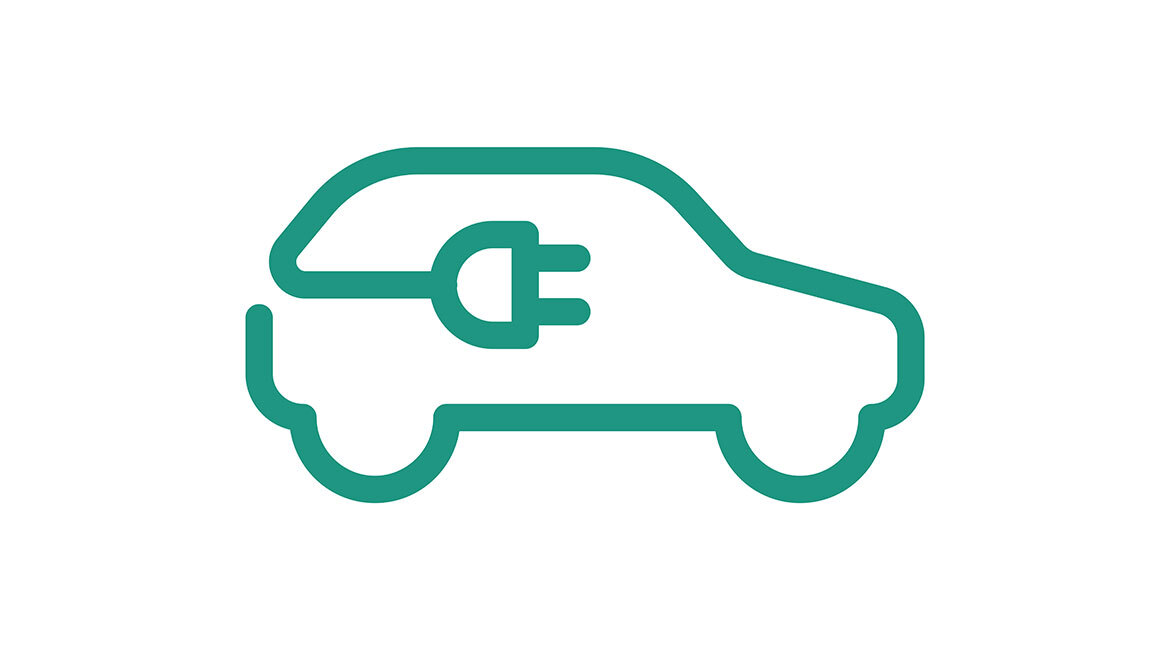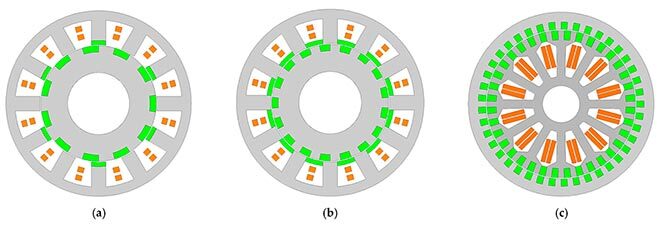Driving Transportation to Electrification

Purchased on Istockphoto.com. Copyright.
Numerous studies are underway around the world to improve the performance of electric vehicle propulsion systems. Some of these focus on batteries, others on inverters. At ÉTS, we are aiming to design prototypes of advanced electric motors that are more compact, more efficient and have a high torque density, in addition to offering good mechanical resistance. Here are some of the types of motors we are working on.
Dual Permanent Magnet Machine
Electric machines play an important role in driving transportation to electrification. Among different types of electric machines, permanent magnet (PM) machines are recognized as the most promising candidates with inherent high torque capability and high efficiency, and have been widely investigated by researchers. In dual PM machines, the PMs are used on both the stator and the rotor, which results in a flexible PM arrangement and can enrich the PM machine category. A two-way flux modulation effect is incorporated into the design to ensure effective magnetic coupling and generate large torque.

Fig. 1. Configurations of dual-PM machines: (a) Stator-tooth PM type; (b) Stator-slot PM type; (c) Stator-multitooth PM type.
DC-Coil-Free Hybrid-Excited Machine
In order for the driving motor to run at high speeds and increase the maximum speed of electric vehicles accordingly, the driving motor is expected to have a good flux weakening ability to widen the speed range. Hybrid excitation is a good method to enhance flux weakening ability. However the additional field winding reduces the space for armature winding and sacrifices output torque. In the DC-coil-free hybrid-excited machines, the field winding and armature winding are integrated, and DC bias current is injected into the winding to realize flux weakening control. Since the ratio of DC bias current to armature current can be adjusted flexibly, DC-coil-free hybrid-excited machines can achieve wide-speed ranges while maintaining high output torque.

Fig. 2. Configuration and winding connection of the DC-coil-free hybrid-excited machine. (a) Configuration. (b) Winding connection.
Memory Machine
A memory machine has the same structure as the PM machine counterparts. However it uses PMs with low coercivity force like AlNiCo to realize online flux regulation. The working point of PMs can be controlled by current pulse without introducing additional copper loss. The efficiency of memory machines during high-speed operation can be significantly improved. Memory machines have a high potential for electric vehicle propulsion; existing challenges include the establishment of a precise hysteresis model of AlNiCo PMs, accurately detecting the rotor positions and air-gap flux, as well as the cooperative control of machine driving and online flux adjusting.
A field Gaining Momentum
New ideas are also making their way, such as the use of 4 small engines, coupled directly to the wheels. In addition to a more direct transmission, this concept would allow allocating more battery space, thus increasing autonomy.
Transportation electrification is at the crux of sustainable development and greenhouse gas reduction initiatives and we are proud to contribute to these efforts.


